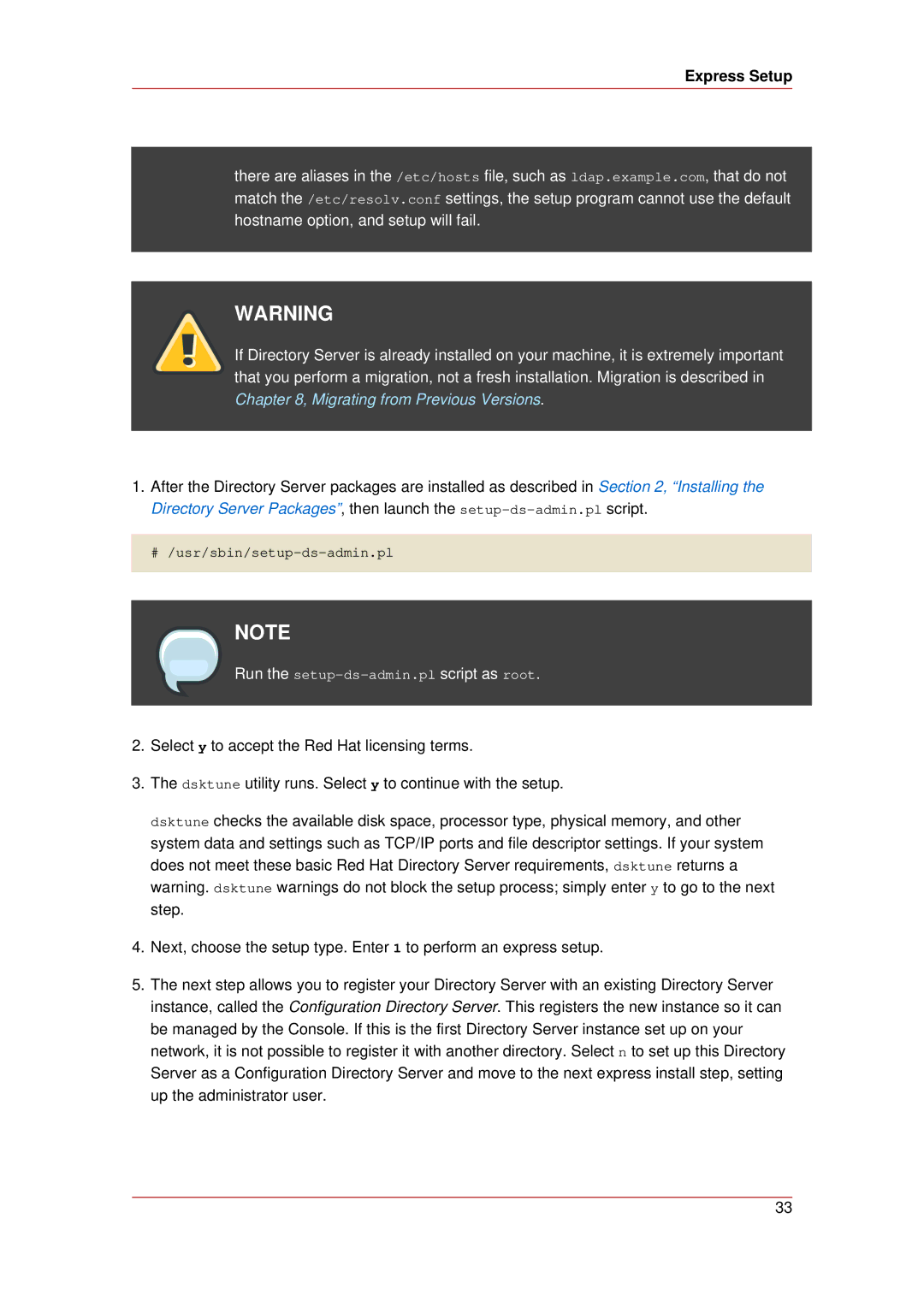
Express Setup
there are aliases in the /etc/hosts file, such as ldap.example.com, that do not match the /etc/resolv.conf settings, the setup program cannot use the default hostname option, and setup will fail.
WARNING
If Directory Server is already installed on your machine, it is extremely important that you perform a migration, not a fresh installation. Migration is described in Chapter 8, Migrating from Previous Versions.
1.After the Directory Server packages are installed as described in Section 2, “Installing the Directory Server Packages”, then launch the
NOTE
Run the
2.Select y to accept the Red Hat licensing terms.
3.The dsktune utility runs. Select y to continue with the setup.
dsktune checks the available disk space, processor type, physical memory, and other system data and settings such as TCP/IP ports and file descriptor settings. If your system does not meet these basic Red Hat Directory Server requirements, dsktune returns a warning. dsktune warnings do not block the setup process; simply enter y to go to the next step.
4.Next, choose the setup type. Enter 1 to perform an express setup.
5.The next step allows you to register your Directory Server with an existing Directory Server instance, called the Configuration Directory Server. This registers the new instance so it can be managed by the Console. If this is the first Directory Server instance set up on your network, it is not possible to register it with another directory. Select n to set up this Directory Server as a Configuration Directory Server and move to the next express install step, setting up the administrator user.
33
